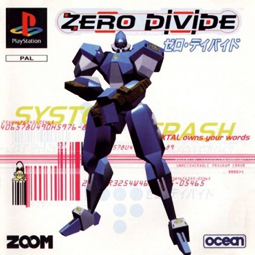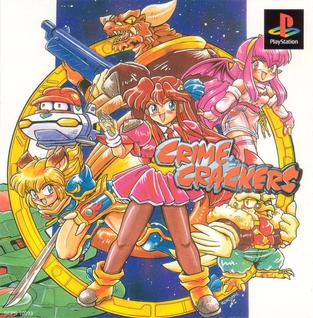
Gals Panic is a series of Japanese eroge by Kaneko for the arcades. The gameplay in the Gals Panic series is similar to Taito's classic puzzle game Qix; the objective is to control a marker on a board and uncover backgrounds, which depict women in a sexual nature who progressively strip to nudity. Many clones of Gals Panic were made after the original game achieved popularity in the 1990s.

Famitsu, formerly Famicom Tsūshin, is a line of Japanese video game magazines published by Kadokawa Game Linkage, a subsidiary of Kadokawa. Famitsu is published in both weekly and monthly formats as well as in the form of special topical issues devoted to only one console, video game company, or other theme. Shūkan Famitsū, the original Famitsu publication, is considered the most widely read and respected video game news magazine in Japan. From October 28, 2011, the company began releasing the digital version of the magazine exclusively on BookWalker weekly.
1997 saw many sequels and prequels in video games, such as Final Fantasy VII, Castlevania: Symphony of the Night, GoldenEye 007, Star Fox 64, Crash Bandicoot 2: Cortex Strikes Back, Quake II, Mega Man Legends, Riven, Tomb Raider II, Dark Rift, Tekken 3 and Virtua Striker 2, along with new titles such as Oddworld: Abe's Oddysee, Gran Turismo, Diablo, Grand Theft Auto and Fallout.
1996 saw many sequels and prequels in video games, such as Super Mario 64, Duke Nukem 3D, Street Fighter Alpha 2, Super Mario RPG, King's Field III, Virtua Fighter 3, along with new titles such as Blazing Heroes, NiGHTS into Dreams..., Crash Bandicoot, Pokémon Red/Green/Blue, Resident Evil, Dead or Alive, Soul Edge, Quake and Tomb Raider.
1995 saw many sequels and prequels in video games, such as Dragon Quest VI, Mega Man 7, Super Mario World 2: Yoshi's Island, Donkey Kong Country 2: Diddy's Kong Quest, and Tekken 2, along with new titles such as Mario's Picross, Battle Arena Toshinden, Chrono Trigger, Rayman, Twisted Metal, Star Wars: Dark Forces, Destruction Derby, Wipeout and Jumping Flash!

Assault Suits Valken, also known as Cybernator, is a 2D mecha action game developed by Masaya and released in 1992 for the Super Nintendo Entertainment System. The second entry in the Assault Suit series, it is a prequel to the first game, Target Earth. The game was localized and published overseas by Konami. The story follows Jake Brain who pilots a giant mecha and fights in a war engulfing the entire world.

Ogre Battle is a series of five tactical role-playing and real-time strategy video games developed by Quest Corporation and is currently owned by Square Enix through Square's acquisition of Quest. There are five main games in the series, starting with the release of Ogre Battle: The March of the Black Queen in 1993.

Mega Man X3, known as Rockman X3 (ロックマンX3) in Japan, is a 1995 action-platform game released by Capcom for the Super Nintendo Entertainment System (SNES). The game was originally released in Japan on December 1, 1995, and later in North American and PAL regions in 1996. It is the third game in the Mega Man X series and the last to appear on the SNES. Mega Man X3 takes place in a fictional future in which the world is populated by humans and intelligent robots called "Reploids". Like their human creators, some Reploids involve themselves in destructive crime and are labelled as "Mavericks". After twice defeating the Maverick leader Sigma, the heroes X and Zero must battle a Reploid scientist named Dr. Doppler and his utopia of Maverick followers.

Bomberman: Panic Bomber is a 1994 puzzle video game developed and published by Hudson Soft for the PC Engine on December 22, 1994. It was later released for the Neo Geo, Super Famicom, Sharp X68000, FM Towns, NEC PC-9821, Virtual Boy, and PlayStation Portable. It saw a re-release for the Wii and Wii U's Virtual Console services. Panic Bomber is a falling block game with the players' goal being to clear matching blocks using bombs, ensuring their screen does not fill and that their opponents' screens do. It received mixed to positive reception, identified as a decent game by multiple critics. It has been compared to the falling block puzzle game Tetris. The Virtual Boy version received a mixed reception for its handling of the platform's visual capabilities.

Bomberman Land 2: The Biggest Theme Park in Game History is a 2003 video game developed by Racjin and published by Hudson Soft that was released in July for the PlayStation 2 and GameCube. Part of the Bomberman franchise, it is the sequel and the second game in the Bomberman Land series.

Twisted Metal is a 1995 vehicular combat video game developed by Sony Interactive Studios America and SingleTrac, and published by Sony Computer Entertainment for the PlayStation. The game's plot is centered on the titular competition in which various drivers in modified vehicles must destroy the other vehicles in an attempt to be the last one alive. The winner meets the organizer of the competition, a mysterious man named Calypso, who will grant the winner a single wish, regardless of price, size or even reality. A commercial success, it was followed up by a sequel, Twisted Metal 2 (1996), as part of the Twisted Metal series.

Rosco McQueen: Firefighter Extreme is an action-adventure video game developed by British company Slippery Snake Studios and published by Sony Computer Entertainment for the PlayStation. Sony's subsidiary Psygnosis released the game in North America.

Bomberman Wars is a 1998 Japanese video game in the Bomberman series released for the Sega Saturn and PlayStation. It is a strategy role playing game, in contrast to previous games.

Cyber Sled is a vehicular combat video game developed and published by Namco. It was originally released for arcades in 1993. The game's perspective is third-person by default, but can be switched to a first-person perspective. The game was nominated for Most Innovative New Technology at the 1994 AMOA Awards. It later received a sequel in 1994, Cyber Commando.

Kowloon's Gate is a 1997 adventure video game published by Sony Music Entertainment. It was released for the PlayStation in Japan, but not in other regions.

Zero Divide (ゼロ・ディバイド) is a 1995 3D fighting video game developed by Zoom for the PlayStation, originally released in August 1995 and also as a launch title in North America. A Windows PC port was later released, subtitled Techno Warrior in North America. Zero Divide has a robot theme and features mechanics similar to its contemporary Virtua Fighter, as well as similarly polygon-based graphics. The game was popular in Japan, where it was later re-released in 2010 on newer systems through the PlayStation Network. It was followed up by a sequel, Zero Divide 2 (1997).

The Adventure of Little Ralph is a 1999 platform video game developed and published by New Corporation for the PlayStation. It was released only in Japan.

Crime Crackers is a 1994 action role-playing first-person shooter video game developed by Media.Vision and published by Sony Computer Entertainment for the PlayStation. Based on a science fiction manga set after an intergalactic war, the story follows of group of bounty hunters aboard the spacecraft Pink Dolphin as they take on jobs requested by the Galactic Federation police. Gameplay resembles dungeon crawlers, largely consisting of exploring complex 3D corridors, collecting items, and shooting enemies. The player is able to freely rotate between three unique characters within missions, while points earned afterwards can be used to purchase consumable items and upgraded equipment.

Bishōjo Senshi Sailor Moon SuperS: Shin Shuyaku Sōdatsusen is a 1996 fighting video game developed and published by Angel for the PlayStation and Sega Saturn. It is based upon Naoko Takeuchi's Sailor Moon shōjo manga and anime series. Loosely following the fourth season of the anime series, which adapted the fourth arc of the manga, the players control either one of the five original Inner Senshi or one of the four Outer Senshi as they enter a tournament to fight against each other and become the winning victor. The game was created by most of the same team who worked on previously released fighting titles in the Sailor Moon franchise for the Super Famicom at Angel.

















